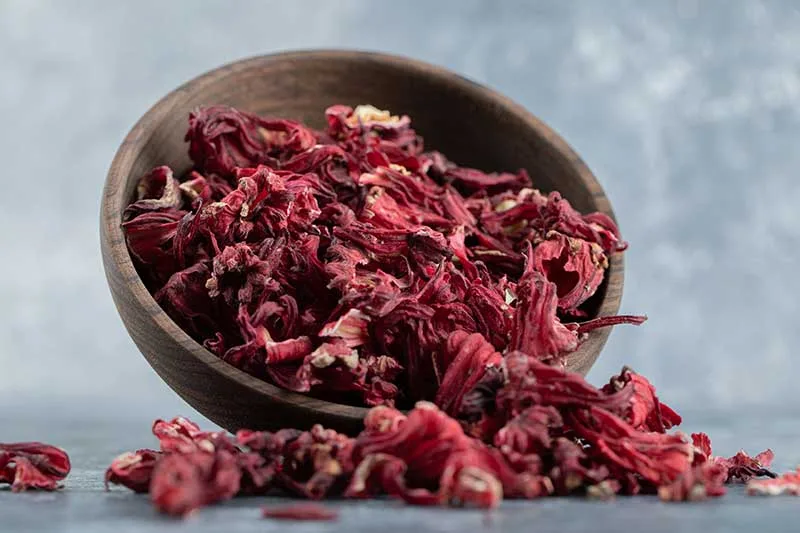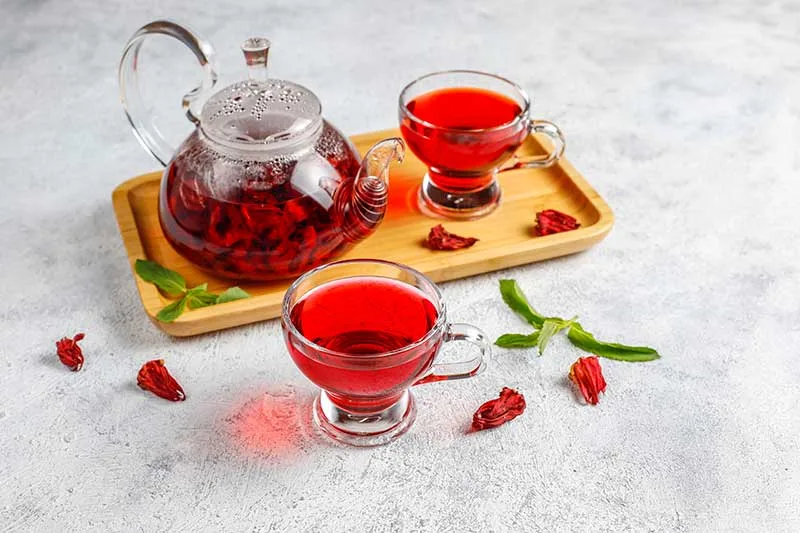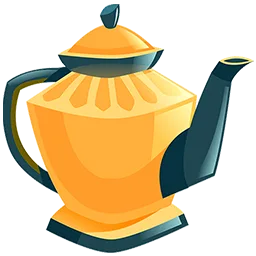Hibiscus Tea: Origin, Health Benefits, and How to Brew it
To be honest, when I first saw the attractive red color of hibiscus tea, I subconsciously wanted to brew and drink a cup or two, regardless of its taste. Hibiscus or sour tea is made from the dried flowers of the Hibiscus sabdariffa plant, but it has different names in different parts of the world. For example, in Egypt it is called hibiscus, in West Africa it is called bisap, and in Mexico it is called agua de jamaica. Hibiscus is not only a colorful and tasty herbal tea, but it is also full of beneficial compounds that help the heart, liver, and immune system.
In this article, we’ll explore the history of hibiscus, its health benefits, how much is safe to drink, and simple brewing recipes so that you can brew and enjoy it in the comfort of your home.
What is The Origin of Hibiscus?
The hibiscus plant originates from Africa and has been growing in tropical regions for centuries. The Egyptians and Sudanese have been using it to brew hot and cold drinks since ancient times, and consider it part of their traditional customs and celebrations.

In West Africa, the drink is called bisap or sobolo, and it is a parf of their cultural identity, usually served with ginger or mint. In Mexico and Latin America, a cold and sweetened drink made from hibiscus flowers is called agua de jamaica, which is popular in the region.
What Are The Health Benefits of Hibiscus?
Let’s look at the health benefits of hibiscus to understand why it is so popular among avid tea drinkers and herbal tea lovers.
- Reducing blood pressure: Scientific research has shown that regular consumption of hibiscus tea can help reduce systolic and diastolic blood pressure, particularly in individuals with high blood pressure.
- Improving blood lipids: Hibiscus lowers LDL cholesterol levels, or bad cholesterol, and therefore helps with heart health.
- Protecting the liver: The antioxidants in hibiscus also reduce oxidative stress in the body and help with healthy liver function.
- Anti-inflammatory properties: Hibiscus compounds reduce cell inflammation and prevent damage caused by free radicals.
- Antimicrobial effect: Hibiscus naturally prevents the growth of some bacteria and helps cleanse the body.
- Helps with weight control: Some studies show that hibiscus tea helps with weight loss and body fat reduction.
- Boosts the immune system: The vitamin C and antioxidants in hibiscus also boost the immune system and make the body more resistant to colds and infections.
In fact, when you brew a cup of hibiscus tea, you can take a moment with a cup of drink in the middle of a busy day and get the energy you need to go through the rest of the day and improve your mood.
How Many Cups of Hibiscus Tea Can You Drink Everyday?
Although hibiscus tea is healthy and beneficial, excessive consumption still causes problems. Experts recommend that 2 to 4 cups per day is sufficient and safe.
If you are taking blood pressure, diabetes, or diuretic medication, you should consult a doctor before drinking this exotic tea. Pregnant and breastfeeding women should also be careful with regular drinking of hibiscus tea or herbal blends that contain hibiscus.
Additionally, the acidity of hibiscus tea can damage tooth enamel, so drink some water and rinse your mouth afterwards. Always remember that herbal teas are beneficial in moderation, not in excess.
Top 5 Hibiscus Products on Amazon
To brew hibiscus at home, these five popular products are worth trying:
- Organic Hibiscus Tea: High-quality organic tea bag with quick brewing
- FGO Organic Hibiscus Tea: With eco-friendly packaging.
- Badia Hibiscus Tea: Economical and caffeine-free
- Blend art Hibiscus Herbal Tea: A blend of hibiscus with cinnamon and orange peel for a different flavor.
- Premium Hibiscus Tea Bags: Hand-picked flowers with no artificial additives.
Hibiscus Tea Recipes
Let’s see how to brew hibiscus flower tea and enjoy a colorful, tasty, and nutritious drink at home. Below are three popular recipes for hibiscus or sour tea.
#1 Classic Hibiscus Tea
- Add 1 tablespoon of dried hibiscus flowers into an infuser.
- Pour 1 cup of boiling water over them, and steep for 5 minutes.
- Remove the flowers and serve with honey or lemon.

You can toss steeped leaves into the garden to help plants grow better.
#2 Iced Hibiscus Tea
- Pour 1/2 cup of dried hibiscus flowers into a teapot.
- Add 4 cups of cold water.
- Refrigerate overnight for a perfect cold brew herbal tea.
- Strain and serve with ice, lemon, or mint.

You can also brew this for children. Check our article on herbal teas for children to find the best recipe that is safe and delicious for kids.
#3 Hot Hibiscus Decoction
- Boil a tablespoon of dried hibiscus flowers in a cup of water.
- Add a piece of ginger and a cinnamon stick.
- Steep for 5 to 7 minutes.
- Strain and serve with honey or lemon.
This decoction improves the health benefits of the hibiscus flower, but I don’t recommend drinking it on a daily basis.
Conclusion
Hibiscus tea is a colorful and delicious tea that has many health benefits. Moderate consumption helps control blood pressure, heart and liver health, reduce inflammation, and boost the immune system. But remember, always consider your dosage and medical conditions.
With simple brewing and experimenting with hot and cold versions, you can make this drink a part of your daily routine. Each cup is like an energizing moment that refreshes your mind and keeps your body healthy. With a little creativity, you can even add new flavors to it and have your own personal experience.
So the next time you are looking for a healthy and tasty drink, hibiscus is the best option, it will both relax, energize, and add a fresh and colorful feeling to your day.
